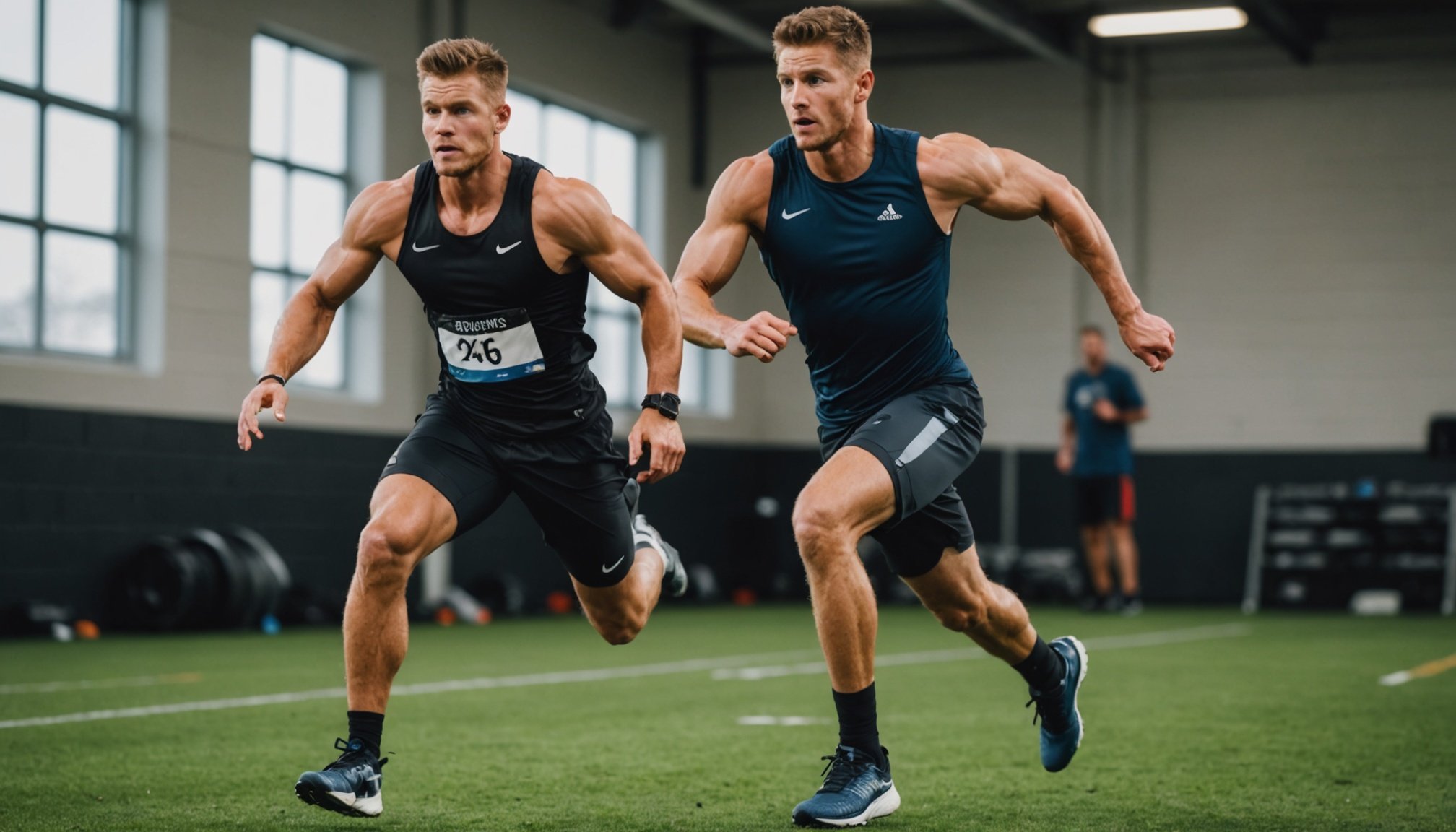Overview of Wearable Technology in Sports
Wearable technology has rapidly become a cornerstone in modern athletic training, integrating seamlessly into various sports disciplines to augment athletic performance. The evolution of wearable technology in sports is marked by a transition from simple devices that tracked steps to advanced multi-functional gadgets that monitor a range of physiological metrics. This technological transformation offers athletes real-time insights into their physical condition, enabling precise adjustments to training regimens.
Different Types of Wearable Devices
Wearable devices in sports are diverse, each with specific functionalities tailored to enhance performance. Common types include smartwatches and fitness trackers, which provide extensive features such as heart rate monitoring, GPS for distance tracking, and activity logging. Additionally, there are specialized devices designed for particular sports, measuring sport-specific metrics like stroke efficiency for swimmers or stride length for runners. This customization allows athletes to refine their techniques and strategies uniquely suited to their sport.
Topic to read : Empower your dance: the ultimate safe and effective strength training guide for dancers
Adoption Trends Among Athletes and Coaches
The prevalence of wearable technology in sports is steadily increasing, with athletes and coaches recognizing the value of exact data analysis. These devices serve not only to better personal records but also assist in injury prevention through continuous monitoring. Coaches use this data to devise improved training protocols, while athletes benefit from understanding their physiological limits and capacities. Such widespread adoption underlines a new era where technology in sports is indispensable for optimizing performance levels.
Key Features of Popular Wearable Tech
In the world of modern athletics, wearable technology stands out with its innovative features, enhancing athletic performance significantly. Smartwatches for athletes and fitness trackers are equipped with diverse functionalities that cater to various sports needs. Some critical features include heart rate monitoring, which allows athletes to gauge their exertion levels and maintain optimal performance without overexertion.
Topic to read : Protecting dancers: key conditioning strategies to avert overuse injuries
Another popular feature is GPS tracking, which provides accurate data on distance and pace, crucial for outdoor sports like running and cycling. This empowers athletes to plan their routes and measure progress effectively. Meanwhile, activity logging captures a comprehensive record of workouts, helping athletes and coaches fine-tune training regimens.
An equally important aspect is the user-friendly interface. Wearable devices aim for simplicity and accessibility, ensuring that athletes can easily navigate and utilize functions during intense activities. Brands often differentiate themselves by offering unique selling points such as waterproof designs, long battery life, or advanced analytics software. These features collectively enhance usability, making wearables indispensable in sports training.
Ultimately, athletes benefit from integrating these technologies into their routines, facilitating continual improvement and a profound understanding of their physical condition. The combination of advanced features and intuitive interfaces truly revolutionizes the training experience.
Benefits of Wearable Tech in Training
Wearable technology in sports training offers substantial benefits, notably in tailoring personalised training plans. Athletes gain access to improved data collection, capturing specific metrics such as heart rate, motion analysis, and calorie consumption. This precise data enables the crafting of targeted workout regimens that cater to individual needs, optimising physical development and potential.
Real-time feedback is another significant advantage, allowing athletes to make performance adjustments on-the-fly. During intense training sessions, immediately accessible data—such as pace and exertion levels—helps athletes maintain or adjust intensity to achieve desired outcomes. This dynamic interplay between data and training can significantly elevate athletic performance.
Furthermore, wearable tech contributes to injury prevention by continuously monitoring physical metrics. Devices alert users to abnormal data patterns that may predict the risk of injury, enabling timely preventive measures. This proactive approach to health management ensures athletes stay on track with their training goals without setbacks caused by injuries.
Overall, the integration of wearable technology into training protocols not only enhances efficiency but also empowers athletes to reach peak performance levels. By leveraging detailed insights from these devices, athletes benefit from a blend of scientific precision and personal insight, creating a robust foundation for progress.
Progress Monitoring and Performance Analysis
Progress tracking and performance analytics have become indispensable elements of modern sports training, thanks to advances in wearable technology. By recording and analyzing an athlete’s performance metrics, these devices allow for a nuanced understanding of data interpretation in sports. This analysis can significantly inform training decisions and strategies.
Wearable devices take the guesswork out of performance monitoring. By collecting detailed data such as heart rate variability and energy expenditure, athletes gain a comprehensive view of their progress over time. This precise monitoring helps identify areas needing improvement and measures the effectiveness of training regimens.
Case studies highlight remarkable performance boosts achieved through data utilization. For instance, a professional cyclist using wearables to track cadence and speed saw a marked improvement in race times after adjusting their training based on these analytics. Such real-world examples showcase how strategic data use can lead to significant performance gains.
Comparing manual vs. automated monitoring reveals the clear efficiency advantage of wearables. While manual tracking is susceptible to errors and inconsistencies, automated data collection ensures accuracy and reliability. This shift allows athletes to focus on their sport, maximizing their potential through informed adjustments rooted in precise data.
Expert Opinions on Wearable Technology
In recent years, expert insights have significantly highlighted the transformative impact of wearable technology on sports. Coaches and trainers emphasize its role in optimizing athletic performance, detailing how real-time data facilitates informed decision-making in training. Many professionals recommend integrating these devices early in an athlete’s career to maximise long-term benefits. This proactive approach ensures athletes harness precise, actionable insights, aligning physical efforts with tailored goals.
Athletes themselves share enthusiastic testimonials regarding technology in sports. Numerous professionals credit wearables for elevating their performance through personalized feedback, resulting in notable improvements. Feedback loops generated by these devices allow for consistent adjustments, fostering steady progress.
Moreover, forecasts about the future of wearable tech are optimistic. Experts predict a continual evolution towards more sophisticated, specific devices enhancing individual and team performance. The anticipation is for devices that not only monitor metrics but also offer predictive insights through advanced analytics. This future-oriented perspective points towards a deeper integration of machine learning with sports technology, allowing for smarter training decisions based on historical data and trends.
These expert opinions collectively underline the profound potential of wearables, suggesting a dynamic shift in how athletes and coaches approach training, ultimately setting a new benchmark for performance enhancement.
Practical Tips for Optimizing Wearable Tech Use
Integrating wearable technology into everyday training regimens is critical for athletes aiming to maximise their athletic performance. To ensure that these devices provide the most benefit, it is important to focus on several key areas.
First, understanding how to interpret data from wearables effectively is crucial. Athletes should familiarise themselves with metrics like heart rate, pace, and calorie burn, transforming this information into actionable insights. By aligning device data with training goals, athletes can make informed decisions about training intensity and recovery.
Setting realistic goals is another important factor. Start by using the baseline data from the device to set achievable targets, gradually increasing these as performance improves. These goals should reflect both short-term milestones and long-term aspirations, keeping athletes motivated and focused.
Moreover, selecting the appropriate device based on athletic needs is important for maximizing functionality. Whether choosing smartwatches for athletes or more focused fitness trackers, an analysis of device features against personal requirements ensures the right fit. Consider aspects such as battery life, waterproofing, and compatibility with existing tech environments.
Finally, integrating feedback loops into the training regimen allows for dynamic adjustments, fostering continual improvement. By maintaining a cycle of monitoring, feedback, and adjustment, athletes can consistently optimise their performance with wearables.
Comparative Analysis of Leading Wearable Tech
In the rapidly evolving world of wearable technology, making an informed choice between devices is paramount. Below is an exploration of different options available and how they cater to athletic performance.
Smartwatches vs. Fitness Trackers
Smartwatches for athletes offer comprehensive functionality, encompassing features like heart rate monitoring, GPS, and smartphone integration. They are ideal for users seeking versatile technology. In contrast, fitness trackers focus solely on metrics like steps, calories, and basic heart rate, appealing to those wanting a straightforward fitness companion without added tech distractions.
High-end vs. Budget-friendly Options
High-end wearable devices often provide advanced analytics, longer battery life, and robust design suitable for demanding sports. Budget-friendly options, however, allow access to essential features at a more affordable price, albeit potentially compromising on durability or extra functionalities.
Specialized Devices for Specific Sports
For athletes in niche sports, specialized devices offer a tailored experience. Devices specifically designed for activities such as swimming or cycling provide detailed sport-specific metrics, ensuring that users receive valuable insights tailored to their performance needs.
Understanding these distinctions assists athletes and enthusiasts alike in selecting a device that aligns with their individual needs, ensuring optimal use and return on investment. This consideration enables informed decisions, guiding users towards suitable tech that enhances athletic performance without unnecessary complexity.











